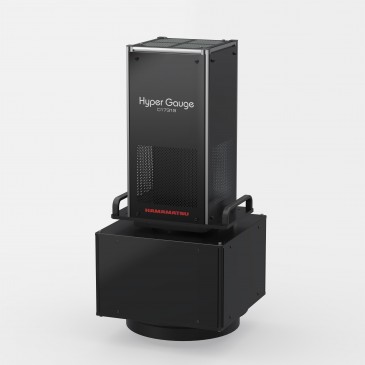
Facts and Factors has published a new research report titled “Fiber Optics Market Size, Share, Growth Analysis Report By Type (Glass, Plastic), By Cable Type (Single-mode, Multi-mode ), By Application (Communication, Non-communication), and By Region - Global and Regional Fiber Industry Insights, Overview, Comprehensive Analysis, Trends, Statistical Research, Market Intelligence, Historical Data and Forecast 2022 – 2028” in its research database.
“According to the latest research study, the demand of global Fiber Optics Market size & share was valued at approximately USD 4,528.5 million in 2021. The market is expected to grow above a CAGR of 9.5% and is anticipated to reach over USD 7,896 million by 2028.”
The report analyses the Fiber Optics market’s drivers and restraints, as well as the impact they have on-demand throughout the projection period. In addition, the report examines global opportunities in the global Fiber Optics market.
What are Fiber Optics? How big is the Fiber Optics Industry?
- Market Overview:
A fiber optic is a flexible, transparent fiber composed of extruded glass (silica) or plastic that can carry light between two ends of the fiber by acting as a waveguide or "light pipe." It's a cylinder-shaped dielectric waveguide that uses total internal reflection to transport light down its axis. The demand for internet around the world, combined with the growing requirement for FTTx, is propelling the fiber optics industry forward. Because optical fiber cable is the primary medium for data transfer from one point to another, telecommunication is the largest end-use industry for fiber optics. Because of the growing use of mobile devices and the associated bandwidth connectivity, the industry is fast expanding. The telecommunications business is being driven by positive market trends in broadband services and big data management. With the expansion of device usage and connectivity, the number of linked devices continues to grow.
Key Insights from Primary Research
- As per the analysis, the Fiber Optics market is likely to grow above a CAGR of around 9.5% between 2022 and 2028.
- The Fiber Optics market size was worth around US$ 4,528.5 million in 2021 and is estimated to hit approximately US$ 7,896 million by 2028. Due to a variety of driving factors, the market is predicted to rise at a significant rate.
- The worldwide fiber optic market's communication segment is predicted to be the largest. The growing number of internet users is a primary factor driving the growth of the fiber optics market in the communication category.
- The APAC fiber optics market is estimated to be the largest over the forecast period.
Competitive Players
The report contains qualitative and quantitative research on the global fiber optics market, as well as detailed insights and development strategies employed by the leading competitors. The report also provides an in-depth analysis of the market's main competitors, as well as information on their competitiveness. The research also identifies and analyses important business strategies used by these main market players, such as mergers and acquisitions (M&A), affiliations, collaborations, and contracts.
Some of the main players in the global Fiber Optics market include,
- Corning Incorporated (US)
- Prysmian Group (Italy)
- Finisar (US)
- AFL Global (US)
- Sumitomo Electric Industries, Ltd (Japan)
- LS Cable & System (South Korea)
- Leoni AG (Germany)
- Furukawa Electric Co. Ltd. (Japan)
- General Cable Corporation (US)
- Sterlite Technologies Limited (India)
- Optical Cable Corporation (US)
Industry Growth Drivers
The industry is being driven by widespread acceptance of 5G, increased deployment of fiber to the home (FTTH) connection, and the rise of the internet of things (IoT). During the projected period, however, the global optical fiber market is expected to be hampered by high installation costs and a rise in wireless communication technologies. Furthermore, the market is likely to benefit from technological developments in fiber optic cable technology and an increase in investments in optical fiber cable (OFC) network infrastructure.
The introduction of wireless technology to exploit the internet is the most basic difficulty facing fiber-optic cable makers. Wireless technology has improved in terms of speed and features as a result of technological advancements. Wireless local area network (WLAN) has become the most preferred method of accessing the Internet in both the household and commercial sectors, indicating a huge market shift towards wireless technology.
Fiber Optics Market: COVID-19 Impact Analysis
Since the advent of the COVID-19 virus in December 2020, global effects of the coronavirus disease (COVID-19) have already begun to be felt, and the 5G Fiber Optic Cable industry will be considerably impacted. COVID-19 has three primary effects on the global economy: it directly affects production and demand, disrupts supply chains and markets, and has a financial impact on enterprises and financial markets.
Wuhan, home of Fiberhome, YOFC, and Accelink, among other enterprises, has the highest concentration of fiber optics supply chain companies, accounting for 25% of global optical fiber production capacity. Demand is normally low during the early stages of a COVID-19 pandemic, but production continues at a reduced rate.
Fiber Optics Market: Segmentation Analysis
The global fiber optics market is segregated based on Fiber Type, Cable Type, and Application.
The fiber optics market has been divided into communication (telecom, premises, utility, CATV, military, and industrial) and non-communication (sensors and fiber optic lighting). The communication segment of the global fiber optic market is expected to be the largest. A major element driving the growth of the fiber optics market in the communication segment is the growing number of internet users.
By Fiber type, the global market is segregated into glass and plastic. Due to growing demand from a variety of applications, glass is the most common fiber type in fiber optics. The glass fiber optics market is being driven by its excellent performance and ease of availability.
Regional Dominance:
During the projection period, the APAC fiber optics market is expected to be the largest. The region's rapid industrialization and infrastructure development have opened up a plethora of prospects for the use of fiber optics in a variety of applications. China, Japan, India, Australia, and South Korea are the largest fiber optics markets in APAC. China is the world's largest manufacturing hub and one of the most populous countries in terms of internet usage.
Furthermore, China is the world's most populous country, resulting in an increase in applications such as communication, premises, utility, CATV, and industrial. Furthermore, countries such as India and South Korea are experiencing strong growth rates as a result of increased industrial activity in the region




































 Back to News
Back to News



























